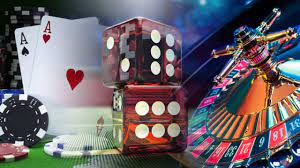
Casinos have long held a special place in the collective الكازينوهات على الإنترنت imagination, embodying the glitz, glamour, and thrill of the gaming world. From the iconic neon lights of Las Vegas to the opulent halls of Monte Carlo, these establishments have beckoned to adventurers, risk-takers, and those seeking a taste of the high life. But beyond the dazzling façade lies a complex and multifaceted world, where psychology, mathematics, and entertainment intersect to create an experience like no other.
A Brief History
The origins of casinos can be traced back to ancient civilizations, where games of chance were played for entertainment and ritualistic purposes. However, it wasn’t until the 17th century that the concept of the modern casino began to take shape. The Ridotto in Venice, established in 1638, is often regarded as the world’s first public gambling house. Over time, casinos spread across Europe and eventually to the United States, where they flourished in cities like New Orleans and Las Vegas.
The Games
At the heart of every casino are the games, carefully designed to entice and engage players. From the spinning roulette wheel to the clinking of slot machines, each game offers its own unique blend of chance and skill. Blackjack tests players’ strategic prowess, while poker rewards those with a keen understanding of probability and human behavior. Meanwhile, games like craps and baccarat captivate with their fast-paced action and potential for big wins.
The Psychology of Gambling
Casinos are expertly designed to keep players engaged and coming back for more. Everything from the layout of the gaming floor to the colors used in the décor is meticulously planned to create an immersive and stimulating environment. The constant sensory input – the flashing lights, the sound of coins cascading into trays, the jubilant cheers of winners – triggers a release of dopamine in the brain, reinforcing the pleasurable experience of gambling.